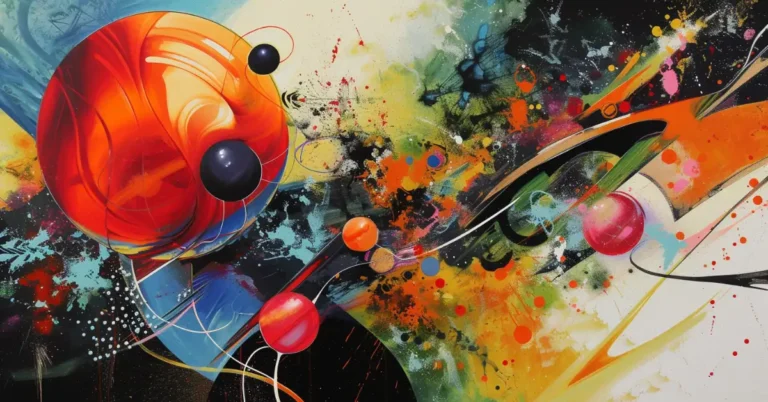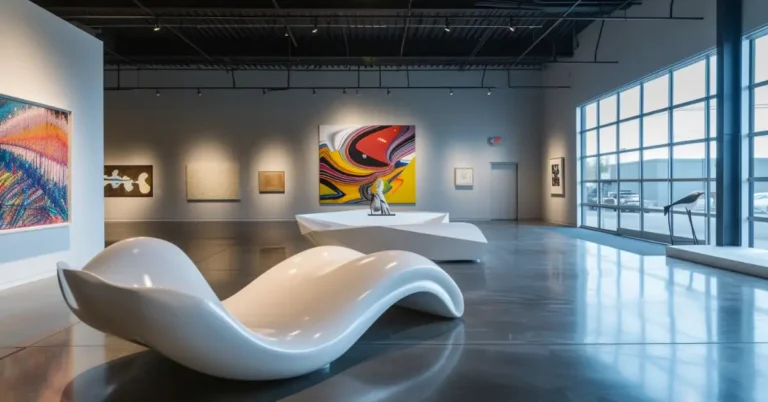Discover the allure of contemporary quilt patterns and transform your quilting projects with innovative designs. These modern patterns offer a refreshing twist on traditional quilting, featuring bold colors and geometric shapes that capture the essence of current art and design trends. Dive into the vibrant community of modern quilters and find inspiration to create your own textile masterpieces with cutting-edge techniques and materials.
What are Contemporary Quilt Patterns?
As a lover of contemporary quilt patterns, I find that quilt patterns are the blueprints for creating beautiful and varied quilt designs. They are a set of instructions that, when followed, produce a finished quilt with a specific design.
Contemporary Quilt Pattern Terminology
I’ve learned that the language of quilting is filled with specific terms. Blocks are the building units of a quilt, often square but they can be other shapes. A template is a pattern or guide used to cut shapes accurately. Piecing is the process of sewing fabric pieces together to create a block or quilt top. And when we talk about the layout, we mean the arrangement of blocks or elements within the quilt.
Types of Quilt Patterns
Quilt patterns can range from simple to complex. Traditional patterns like the Log Cabin, Flying Geese, and the Irish Chain are classic designs that have been passed down through generations. Modern quilt patterns frequently defy conventional designs and might feature bold colors, asymmetry, and improvisational piecing. For example, an eye-catching modern quilt pattern might include unexpected twists like a stark use of negative space.
History and Evolution of Quilting
Quilting has a rich heritage, with its roots dating back centuries. Initially practical, quilts were used for warmth and as protective layers. Over time, the craft evolved, and by the 19th century, quilting became a form of artistic expression. The 20th century introduced the concept of modern quilts, where creative expression took precedence, leading to bold and graphic designs that reflected contemporary tastes.

Essential Quilting Techniques
When I create contemporary quilt patterns, a few essential quilting techniques always come into play. These foundational skills ensure the final piece is both beautiful and durable. Let’s break down the core areas.
Basic Sewing Skills
Mastering basic sewing skills is a non-negotiable for any quilter. This includes understanding how to handle a sewing machine efficiently, how to thread a needle properly, and mastering a consistent seam allowance. These skills ensure the pieces of your quilt align evenly, which is the very bedrock of a well-constructed quilt. A couple of must-haves are:
- A reliable sewing machine for precision
- Knowledge of basic sewing stitches
Piecing Methods
Piecing is like the heart of quilting. It’s where we start bringing our vision to life. Strip piecing can help you quilt faster – it’s a time-honored method that involves sewing strips of fabric together and then cutting them to create smaller blocks or units. Precise cutting and aligning are crucial – remember, always measure twice, cut once.
- Rotary cutting: for more efficient fabric cutting
- Strip piecing: for quilting at a faster pace
Quilting Stitches
Finally, let’s talk about quilting stitches. They’re the veins through which the lifeblood of the quilt flows. You can opt for hand quilting for a traditional touch or machine quilting to get things done quicker. The type of stitch you choose, from a basic straight stitch to more elaborate decorative stitches, gives texture and character to your quilt.
- Straight stitch: for simplicity and strength
- Free-motion stitching: for adding unique designs

Design Elements in Modern Quilting
Contemporary quilt patterns have truly transformed the quilting world with their emphasis on bold, graphic aesthetics.
Geometric Patterns and Shapes
Modern quilts are known for their geometric patterns. I find that these quilts often feature shapes such as squares, rectangles, and triangles arranged in a way that challenges the traditional quilt designs. They can create a sense of movement and add a dynamic look to the quilt.
Patterns like the
- “Ohio star“

- “flying geese“

showcase how geometric shapes can be used innovatively.
Use of Negative Space
Another key element I adore is the use of negative space. It’s not just the shapes that matter, but also where they’re not. A solid background allows the eye to rest and elevates the quilting lines and patterns into the spotlight. This minimalistic design approach often results in striking and impactful visual appeal.
Integration of Color and Texture
Lastly, contemporary quilt patterns make masterful use of color and texture. The interplay between different textures and the bold colors creates quilts that are not only visually stunning but also tactile. Textures can range from smooth, solid fabrics to more elaborate, patterned designs. The colors, whether vibrant or muted, add layers of depth and warmth to a quilt, stirring creativity and personal expression in each piece.

Choosing Fabrics and Materials
When I dive into contemporary quilt patterns, the choices in fabrics and materials are crucial for bringing the modern twist to life. The fabric must not only please the eye but also cooperate with the needle and thread.
Selecting the Right Fabric
In today’s quilt-making, I am all about the color vibrancy and pattern selection that align with modern aesthetics. For example, using geometrics or solids can provide that sleek, minimalist look many modern quilts showcase. Here’s a quick list to help guide the fabric selection:
- Color Theory: Stick with a cohesive color palette, whether it’s bold and bright or soft and muted.
- Prints vs. Solids: Solids often give a modern feel, while prints should be chosen with care to avoid clashing.
- Quality: Opt for quilt-weight cotton as it’s durable and holds up well over time.
Understanding Fabric Texture and Weight
The texture and weight of the fabric affect both the appearance and the handling of the quilt. A lightweight cotton is my go-to because it’s easy to work with and drapes beautifully. However, for something that feels a bit more substantial, a quilters’ flannel can add a cozy warmth. When it comes to thread, I match the weight to the fabric—fine threads for lightweight fabric and stronger threads for heavier material to ensure durable seams.
Quilt Pattern Artists
As a quilting enthusiast, I’ve always been inspired by the talents of contemporary quilt pattern artists. They bring a fresh and innovative perspective to the craft, challenging the traditional boundaries with their unique styles and techniques.
Teresa Silva

Teresa Silva, known for her machine quilting expertise, has used her skills to enhance the modern aesthetic of quilts. Her work combines meticulous craftsmanship with creative designs, which are a testament to her position as a notable figure in the world of contemporary quilt patterns.
Bisa Butler

Bisa Butler is an artist who stands out for her vibrant fabric portraits that tell stories. Her use of color and pattern in quilting transforms the medium into something that transcends traditional quilting methods, creating rich, narrative pieces that capture the essence of her subjects.
Ann Harwell

Ann Harwell’s celestial and scientifically inspired quilts are a marvel. Her pieces often resemble intricate cosmic scenes and reflect her connection with the universe, showcasing her ability to translate complex astronomical concepts into beautiful works of textile art.
Mathew Boudreaux

Mathew Boudreaux, also known as “Mister Domestic,” injects an infectious joy into the quilting world. His work is characterized by playful prints and textures, and he is an advocate for inclusivity within the crafting community, encouraging others to express themselves through their quilts.
Paula Cochrane

Paula Cochrane has a knack for marrying traditional quilting techniques with a contemporary twist. Her designs often feature geometric patterns and a bold use of color, making her patterns a favorite among quilters looking for something that’s both new and familiar.
Each of these artists contributes to the dynamic world of contemporary quilting, making it an ever-evolving form of expression that I find endlessly fascinating. They not only create beautiful art but also inspire others to think outside the box and experiment with fabric and design.
Creating Your Own Quilt Patterns
When I delve into contemporary quilt patterns, I’m often struck by the unique expressions of each quilt. Creating your own quilt patterns is a rewarding way to put a personal stamp on your artwork, pushing the boundaries of traditional designs toward something entirely original.
Inspiration for New Designs
My quest for inspiration often begins with the world around me. Nature, architecture, and even the rhythm of daily life spark ideas. Modern patterns, with their bold shapes and clean lines, can transform a simple concept into a striking design. Sometimes, the inspiration is right in front of me—a single flower or a striking urban landscape can evolve into a modern lone block, which stands as a focal point in the quilt.
Tools for Designing Quilt Patterns
When I’m ready to bring my designs to life, I rely on a few key tools. Graph paper or quilting software can help me visualize the patterns before cutting a single piece of fabric. For sharing my creations, a PDF pattern makes it easy for other quilters to replicate the design. As both an artist and a designer, selecting the right tools ensures that my design patterns process is both efficient and enjoyable.
FAQ – Contemporary Quilt Patterns
What is the most popular quilt pattern of all time?
The most popular quilt pattern of all time is the Log Cabin, known for its classic design and adaptability.
What are the 3 quilts a woman should make?
There is no definitive rule about the three quilts a woman should make, as quilt-making is a personal and creative endeavor. However, some classic types of quilts that many quilters aspire to create include a Patchwork Quilt, an Applique Quilt, and a Memory Quilt. These quilts can showcase a range of skills, creativity, and personal memories.
How do you make a quilt look modern?
To make a quilt look modern, focus on elements such as bold colors, high contrast, minimalist designs, and asymmetric or improvised layouts. Incorporate contemporary fabrics, geometric shapes, and expansive negative space. Simplified and functional quilting lines can also contribute to a modern aesthetic. Explore Modern Quilt Patterns for inspiration and guidance on modern quilting designs.
What is the difference between traditional and contemporary quilts?
Traditional quilts often feature symmetrical patterns, repeating blocks, sashing, and borders, with designs passed down through generations. In contrast, contemporary quilts update these traditional patterns with modern fabrics and settings, blending classic motifs with current trends and techniques. The term “contemporary” implies a modern twist on the traditional, keeping the essence while refreshing the style to reflect present-day aesthetics.
Did you enjoy the blog post on “Contemporary quilt patterns“? We’d love to hear your thoughts! Please share your experience with us in the comment section below.
If you want to keep reading more from us, have a look at these articles.





